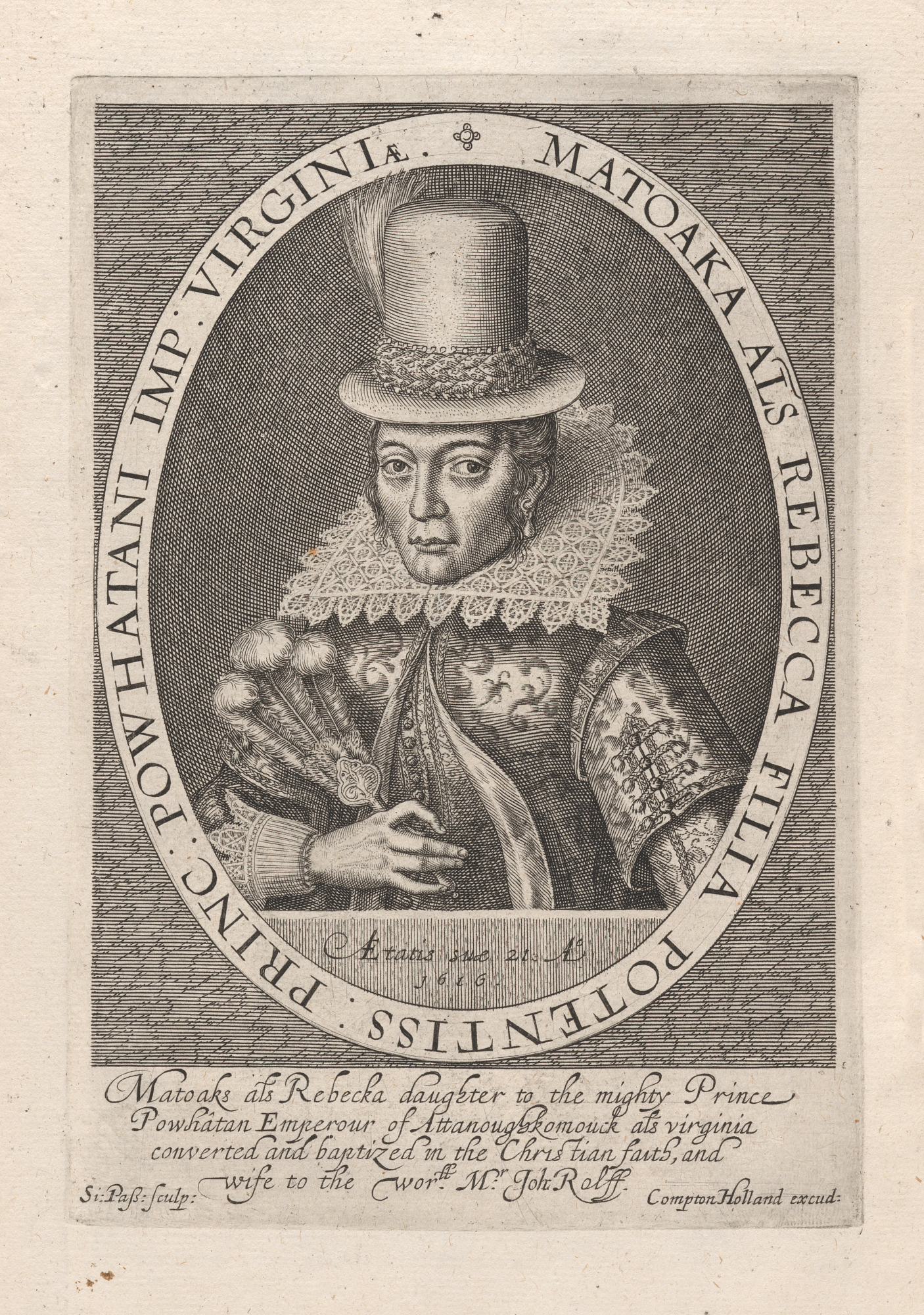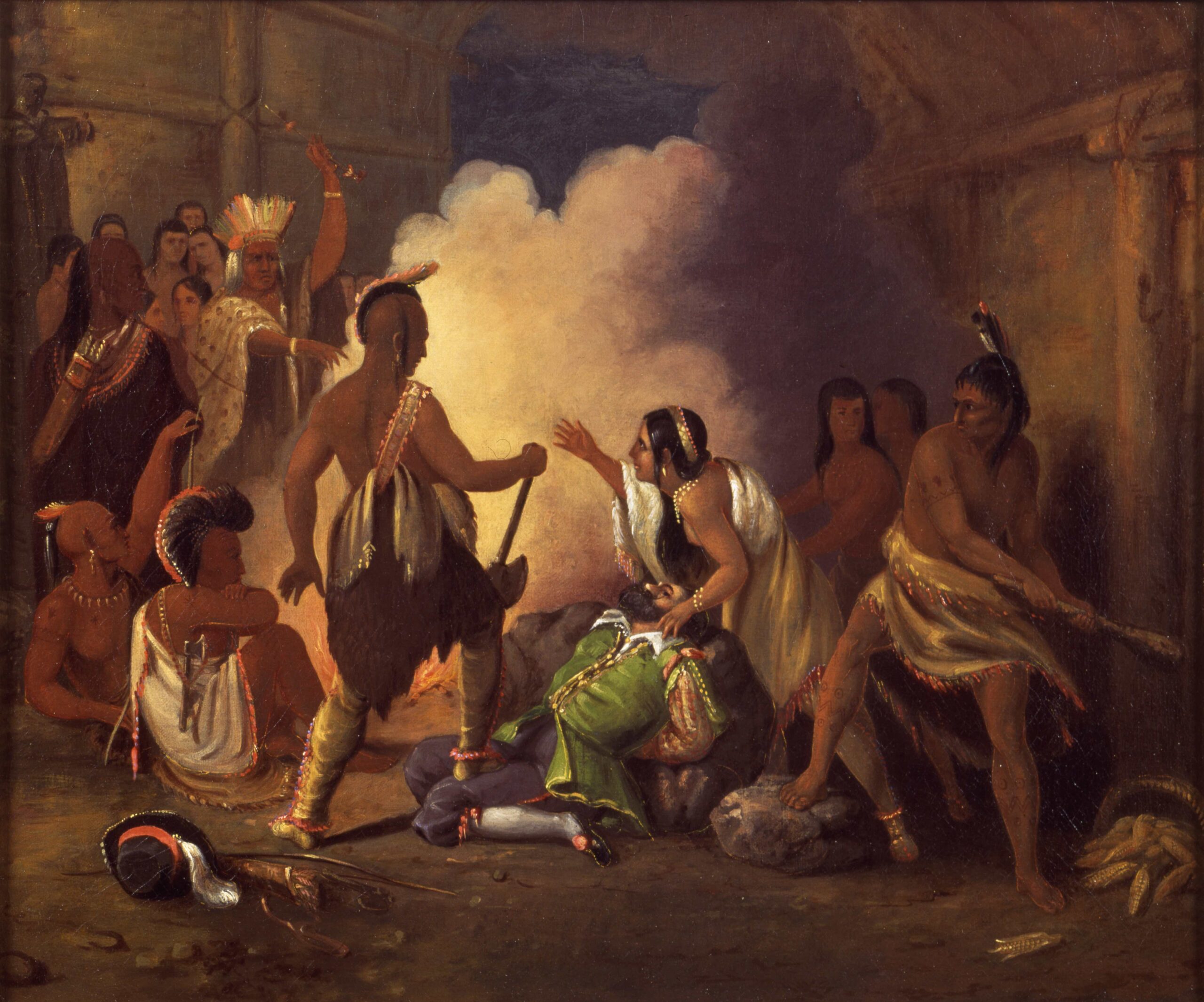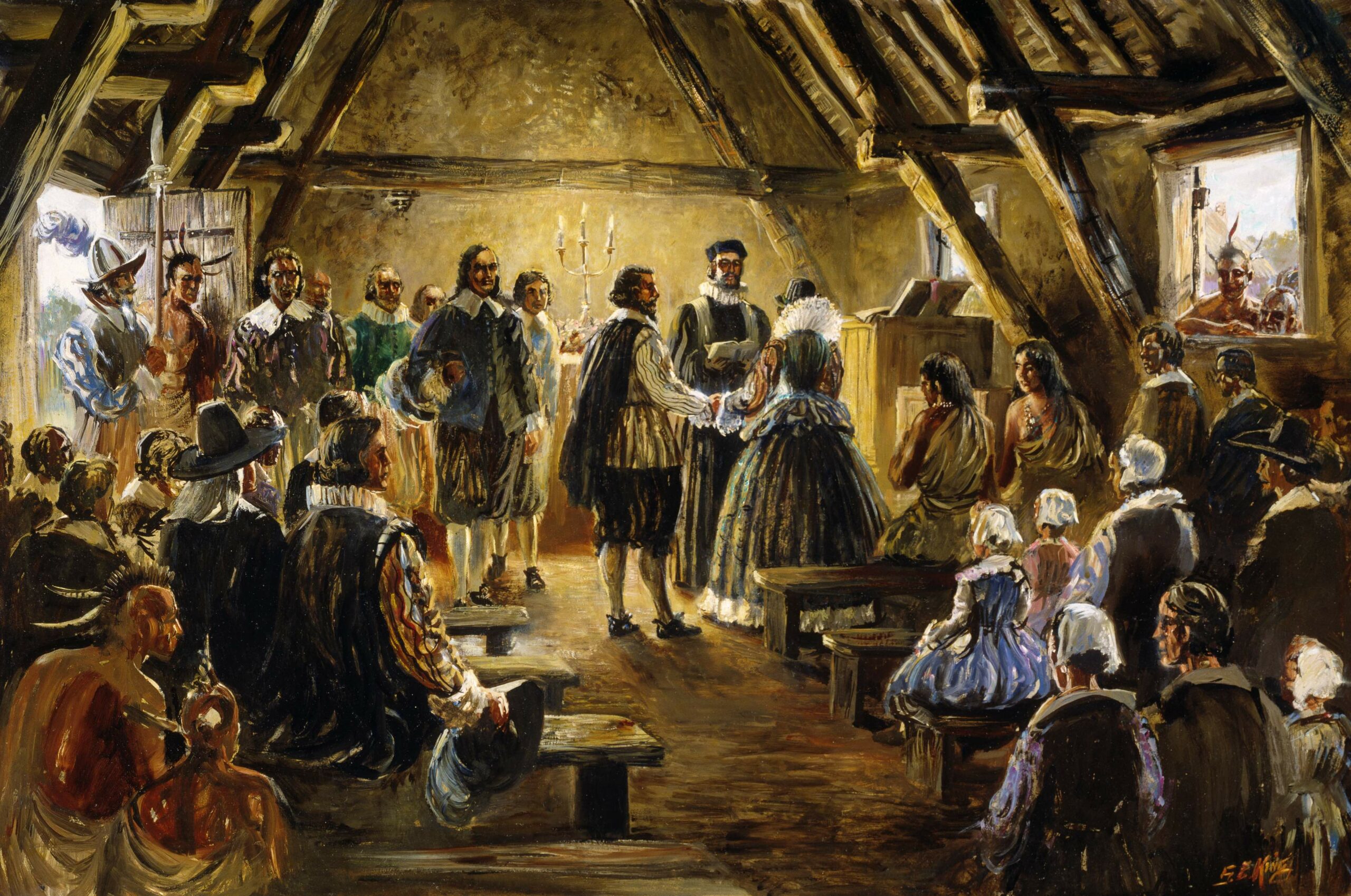Background
Pocahontas is probably the most famous Native American woman in American history. She was born around 1596 in the area known today as Virginia. Her father, Powhatan, was the chief of the Powhatan Paramount Chiefdom, a political alliance of Algonquian-speaking Native American communities. Pocahontas came of age during a time of tremendous change for her community, which began when English settlers arrived in 1607.
Tensions arose between the Powhatan Paramount Chiefdom and the English when the colonists expanded their tobacco plantations onto Native American lands. During raids in 1609 and 1610 the Powhatan killed and captured several English settlers. In 1613 English settlers captured Pocahontas, hoping to exchange her for the prisoners held by the Powhatan. While in English custody, Pocahontas converted to Christianity and took the English name Rebecca. She married an English colonist named John Rolfe in 1614, and soon after gave birth to a son they named Thomas. In 1616 Pocahontas traveled to England with her husband and son. She received a warm welcome, even meeting with King James I. The Virginia Company used her visit to promote life in the colonies. Unfortunately, Pocahontas fell ill and died in London in 1617.
About the Artifacts
Countless images of Pocahontas have been created over the past 400 years. Many depictions of Pocahontas aimed to highlight the possibility of Indigenous people assimilating into European culture. These were often racist in nature and tell us more about the people who created them than about Pocahontas herself.
The first image is a portrait of Pocahontas made in England in 1616 for the book Baziliologia: A Booke of Kings. This was a collection of portraits of English royalty and other notable people. In this portrait, she is dressed as a wealthy English woman. The description that accompanies the portrait highlights her Powhatan heritage and her conversion to Christianity. This is the only known image of Pocahontas that was created during her lifetime.
The second image, from around 1836-40, depicts the story of Pocahontas saving the life of Captain John Smith. Captain John Smith was one of the first English settlers of the Virginia colony. He said that Pocahontas saved his life when the Powhatan took him prisoner in 1607. Right as one of the Powhatan warriors was going to execute him, she threw herself over him. Historians dispute this story. Some believe John misunderstood a Powhatan ceremony. Others suggest John made up the story to sell more copies of his book. His version of the story makes the Powhatan seem like barbarians, with brave young female Pocahontas the only exception. It’s become the most popular story told about Pocahontas, even though it may not be true. This painting depicts Pocahontas as a grown woman, but she would have been around ten or eleven years old the year John claimed it happened. This is just one example of the way artists have changed the details of her life to suit their vision.
The third image is from 1956. It underscores how Pocahontas continued to capture the imagination of Americans in the centuries since her death. The painting depicts her marriage to John Rolfe. Pocahontas is portrayed from the back so viewers cannot see her face. She wears English clothing like her outfit in the 1616 portrait. Both English colonists and Powhatan people, who are portrayed in historically inaccurate dress, are in attendance. This suggests that the marriage between Pocahontas and John established a peaceful alliance between the two communities.
Vocabulary
- Christianity: The group of religions based on the teachings of Jesus Christ.
- Powhatan Paramount Chiefdom: A political alliance of Algonquian-speaking Indigenous communities in Virginia.
- Virginia Company: The English trading company established by the king to settle North America.
Discussion Questions
- How did the different artists depict Pocahontas? What story is each artist trying to tell?
- How have depictions of Pocahontas changed over time?
- Why did Pocahontas become such a popular figure in American history? How have images like these contributed to her legend?
- How have popular images of Pocahontas shaped Americans’ views of Native Americans over time?
Suggested Activities
- APUSH Connection: 2.5 Interactions Between American Indians and Europeans
- Include these images in a lesson about the establishment of the Virginia Colony. These images illustrate how English colonists, and later Americans, remembered and romanticized the events surrounding colonization.
- These are just three examples of depictions of Pocahontas. After examining these three, ask students to find and analyze additional depictions of Pocahontas from works of art, film, and television.
- Pair this resource with Life Story: Cockacoeske, another well-known Powhatan woman. How were both women’s lives changed by the arrival of the English in Virginia? How are they remembered? What do you think accounts for these differences?
- For a larger lesson about how English colonists characterized Native American women, combine this resource with Captivity Narratives.
- For more stories of the experiences of Indigenous women during colonization, see any of the following:
Themes
POWER AND POLITICS; AMERICAN CULTURE









